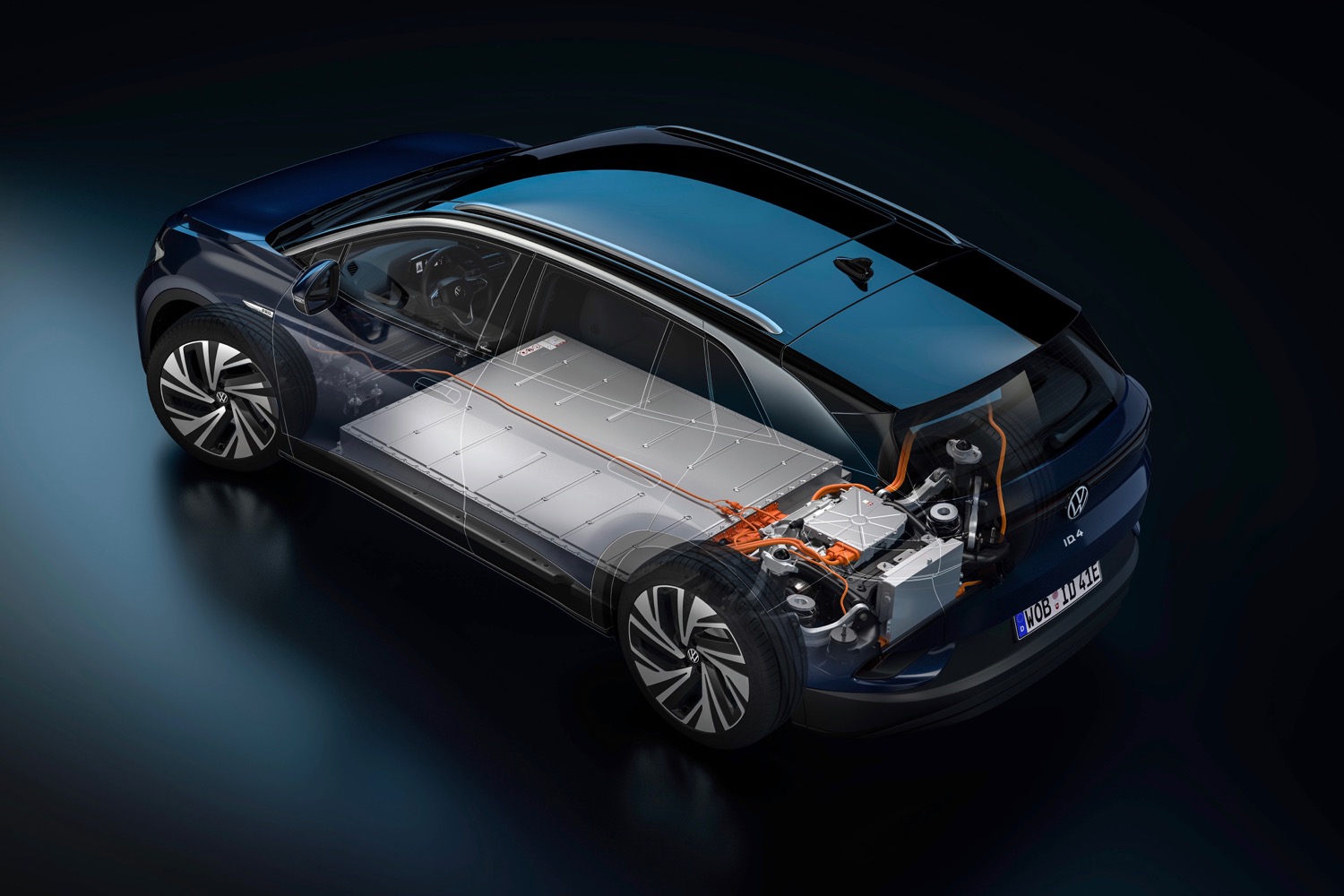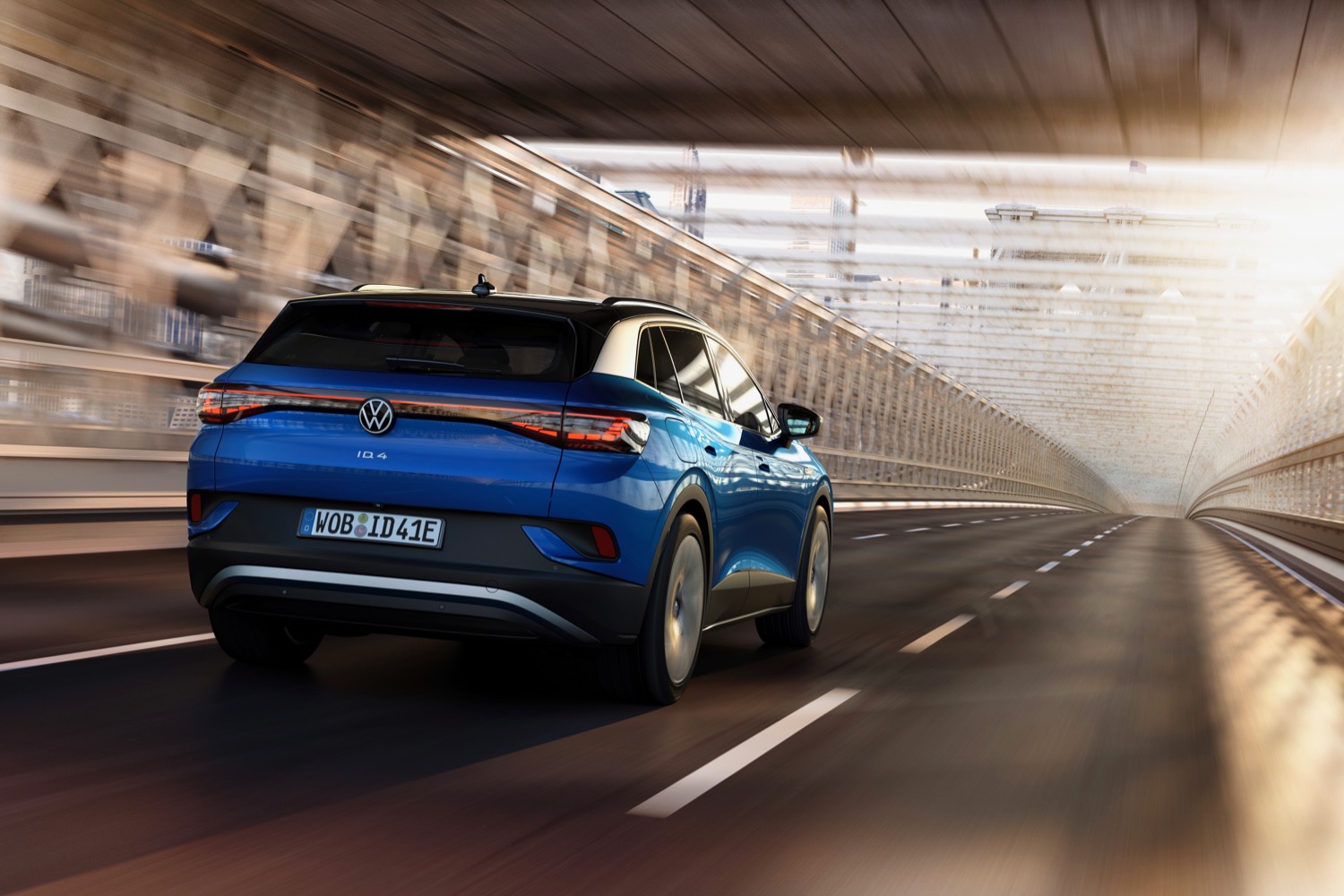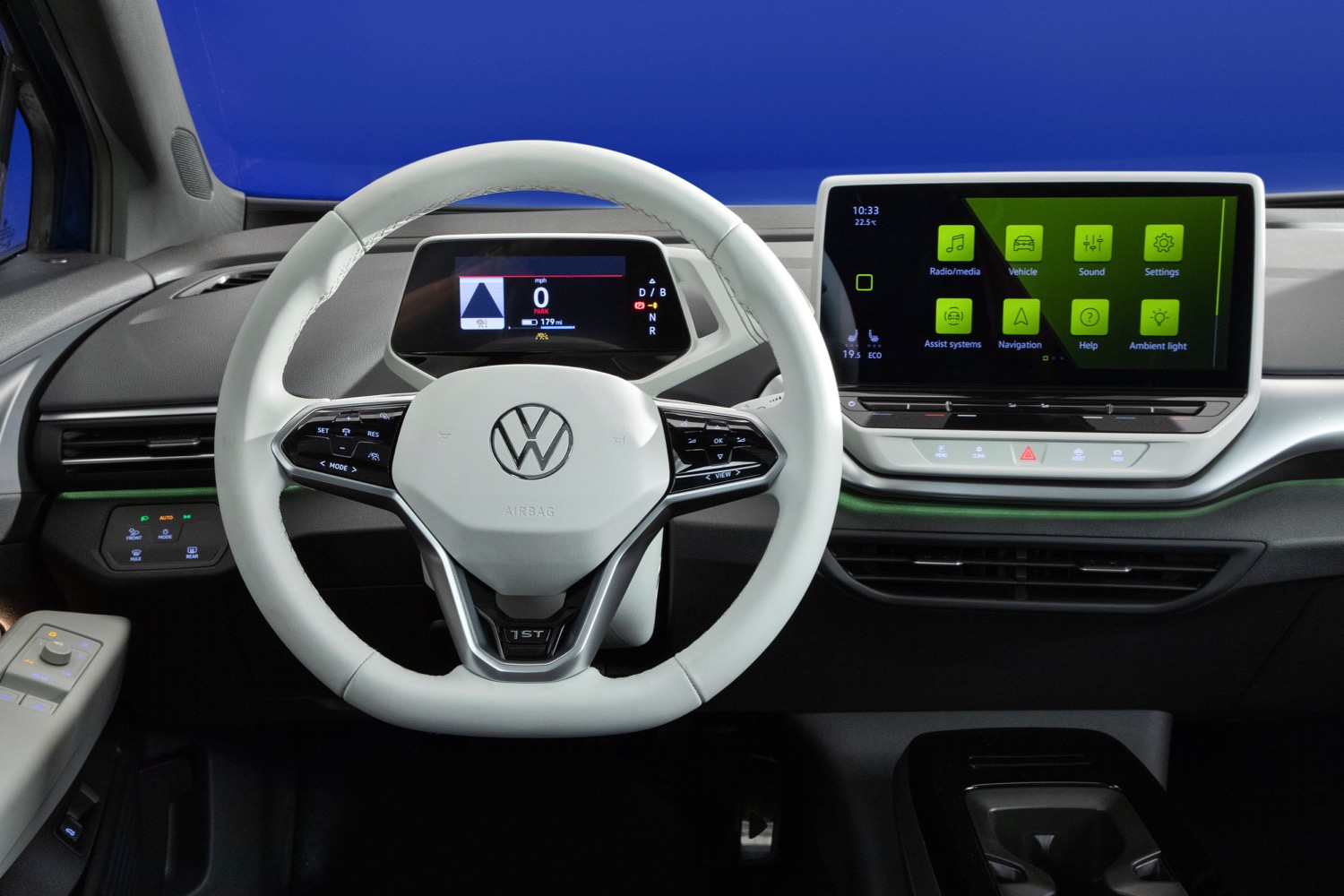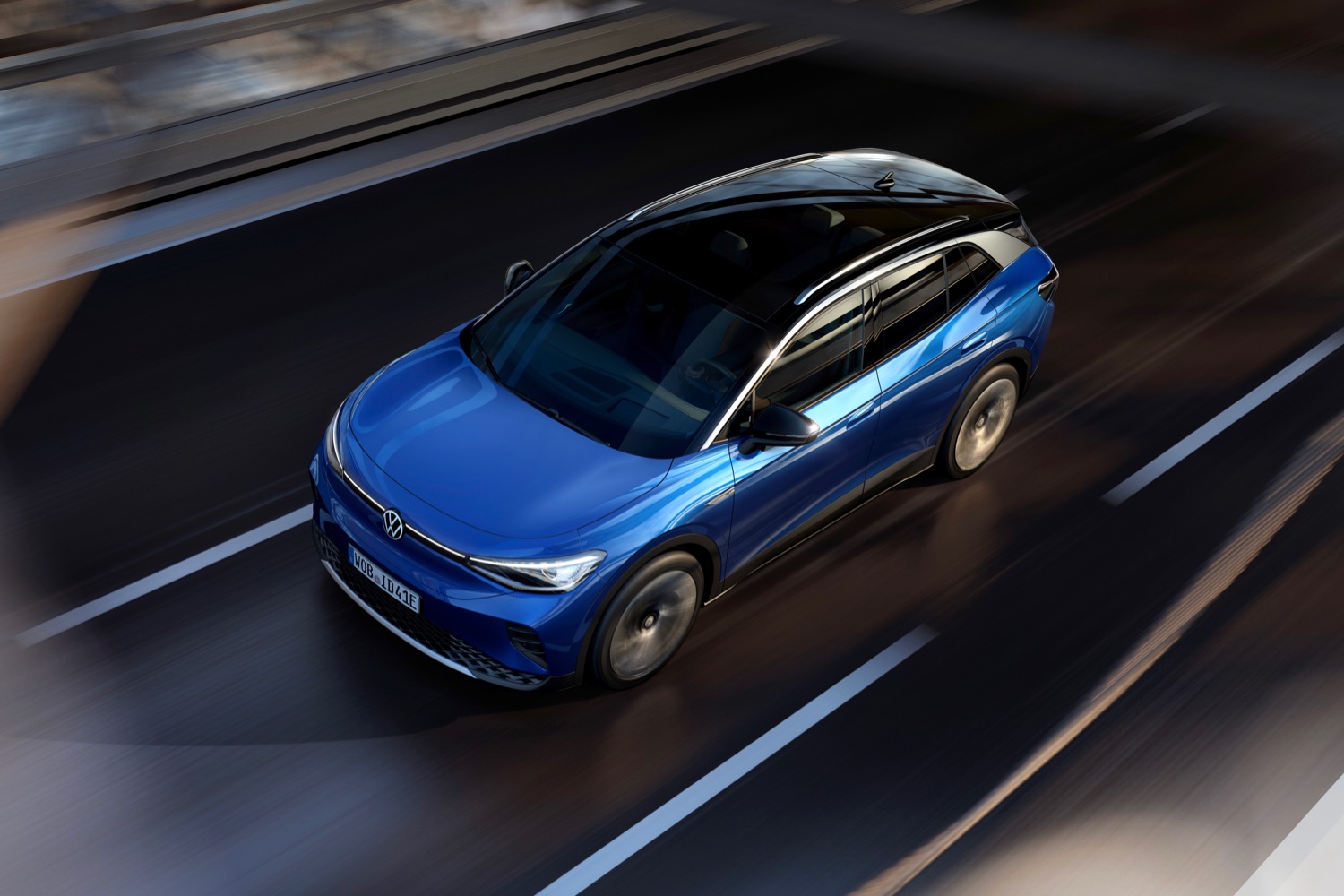After the “Dieselgate” emissions scandal, Volkswagen is trying to clear the air — literally.
The German automaker is going electric in a big way. The 2021 Volkswagen ID.4 is VW’s first mass-market electric car for the United States, and it has a lot of corporate muscle behind it. VW is throwing the full weight of manufacturing capability into producing the ID.4 and other models based on the car’s MEB platform. Nearly every U.S. VW dealer will sell the ID.4.
VW says the ID.4 isn’t meant to compete against other electric cars. It’s meant to coax ordinary shoppers out of their gasoline cars, accelerating the transition to zero-emission transportation.
That’s important context, but what is the ID.4 like as a car? Digital Trends took a short test drive in a prototype ID.4 in New York City to find out.
EV-specific platform
The test car was a first-edition model, which gets a few extra features compared to other ID.4 trim levels, but with the same drivetrain. That means a single, rear-mounted electric motor 201 horsepower and 228 pound-feet of torque, with rear-wheel drive. A dual-motor all-wheel drive model will be added to the lineup in spring 2021.
Front-wheel drive is the default setup for most mainstream cars (including most electric cars in the ID.4’s price range), but rear-wheel drive made more sense here. Unlike the Nissan Leaf or Hyundai Kona Electric, which use repurposed platforms from gasoline cars, the ID.4 rides on an EV-specific platform, so it was actually easier to package the single motor at the back. Drivers likely won’t notice the difference.
Without a heavy gasoline engine to place over the driven axle, electric cars don’t get the traction benefit of front-wheel drive in slippery conditions. On the other hand, rear-wheel drive eliminates torque steer, a tugging at the steering wheel that can often be felt in powerful front-wheel drive cars when accelerating, Dustin Krause, VW director of sales for e-mobility, told Digital Trends. A rear-motor, rear-wheel drive, setup also harkens back to the VW Beetle, he noted.
Driving experience
Rear-wheel drive is generally preferred by car enthusiasts for its handling benefits, but the ID.4 is no sports car. It’s designed to replace the average gasoline car and, judging from this short test drive, at least, it seems like it will be pretty good at that.
Over Manhattan’s cratered pavement and the expansion joints of the West Side Highway, the ID.4 was remarkably comfortable — even with the first-edition model’s 20-inch wheels. Lack of powertrain noise is a given for EVs, but VW also did a good job of muffling road noise, making the interior very quiet. Steering feel was nonexistent, however, making the ID.4 feel less nimble than it might have otherwise.
Anyone who has driven another electric car may be in for a surprise, however. Most electric cars feature strong regenerative braking, recovering energy while allowing for so-called “one-pedal driving,” with limited use of the brake pedal. In contrast, the ID.4 offers relatively little regenerative braking by default. You can get more regen by shifting from “D” to “B,” but still not enough for one-pedal driving.
VW chose to tune the braking system this way because it’s pitching the ID.4 against gasoline crossovers like the Honda CR-V and Toyota RAV4, and wants to make the driving experience more familiar for drivers transitioning from those vehicles, VW spokeswoman Jessica Anderson told Digital Trends.
The ID.4 may be marketed as a crossover, but it feels more like a regular hatchback. It sits fairly low to the ground — which makes getting in and out easy — and the driving position doesn’t have you towering over other cars. That may disappoint some shoppers, but overall the ID.4 had excellent outward visibility, making maneuvering in tight spaces easy. The large amount of glass also gave the interior a spacious, airy feel.
Tech
The interior design features VW’s typical minimalism, with a high-tech twist.
The ID.4 comes standard with an all-digital interface, with a 10-inch infotainment display and a 5.3-inch digital instrument cluster. Apple CarPlay and Android Auto are standard, and a 12-inch infotainment display is available as an option.
VW was quick to note that the prototype test car did not have the final version of the ID.4 software, so the infotainment system wasn’t representative of what customers will get. We can say that the touchscreen is well placed, but the ID.4 could still use some analog controls. The capacitive buttons for things like temperature and audio volume give the dashboard a clean look, but were difficult to use while driving. Knobs or buttons would have been more effective.
Standard driver-assist features include forward collision warning, automatic emergency braking, blind-spot monitoring, lane keep assist, park distance control, automatic high beams, and adaptive cruise control, but we didn’t have an opportunity to test them during this short test drive.
Other things to know
At launch, the ID.4 gets an 82-kilowatt-hour battery pack. Official range figures aren’t in yet, but VW estimates at least 250 miles per charge. Speaking of charging, the ID.4 DC fast charge at 125 kW, allowing for an 80% charge in 38 minutes, according to VW. Customers get three years of unlimited DC fast charging on the Electrify America network, which is funded by VW as part of its diesel-cheating settlement.
The ID.4 first-edition model has already sold out, but it was priced at $43,995 and is scheduled to start deliveries before the end of the year. It will be followed by the rear-wheel drive ID.4 Pro trim level in spring 2021, with a base price of $39,995, and an all-wheel drive ID.4 Pro later in the year, with a $43,695 base price. Note that VW still qualifies for the full $7,500 federal EV tax credit, and state and local incentives may be available as well.
As a car, the ID.4 doesn’t feel particularly groundbreaking, but it doesn’t need to be. Modern electric cars have been available in significant numbers for almost 10 years, so we’re well past the early-adoption phase. The ID.4 aims to win converts by just being a good car, and by leveraging the manufacturing capacity and dealer network of one of the world’s largest automakers. That’s what makes the ID.4 a game-changer.
Editors' Recommendations
- Mercedes’ electric eSprinter isn’t just greener, it’s better
- Volkswagen ID.GTI concept is another icon reimagined as an EV
- Volkswagen is launching its own self-driving car testing program in the U.S.
- Can electric car batteries be recycled?
- VW previews its next electric car in trippy camouflaged form







